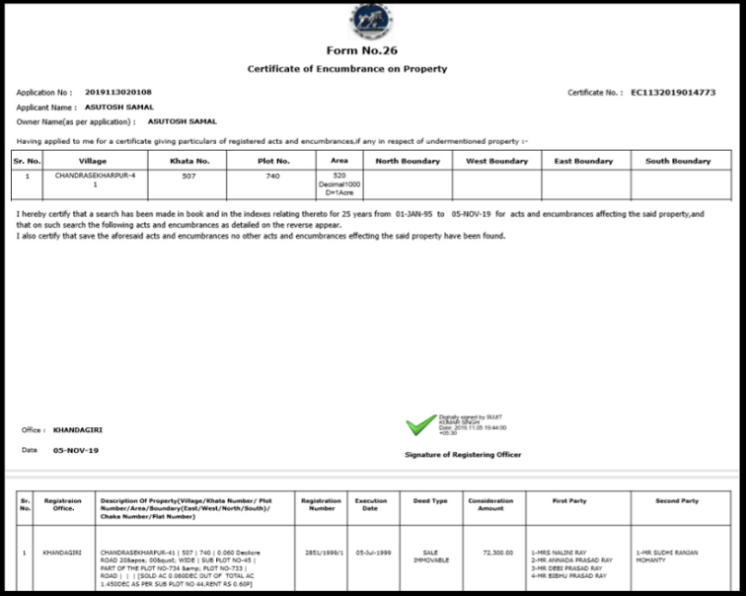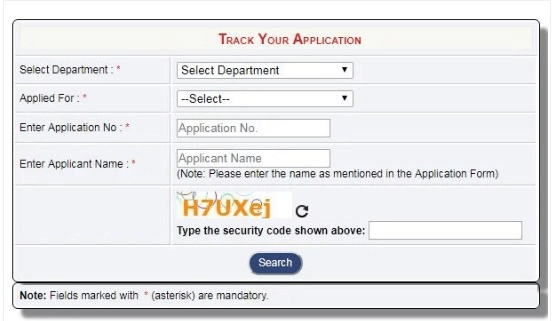What is the full form of EC
EC: Encumbrance Certificate
EC stands for an encumbrance certificate. An EC can be defined as a document confirming that the property is free of legal or money-related tax liabilities, such as a mortgage or unpaid loan. This document is usually required when buying or selling a property or when filling an application for a home loan against a property to confirm that the property is free of any legal liabilities or debts.
A property buyer should always obtain an EC not only to ensure his legal ownership of the property but also to be eligible for loans from most financial firms such as banks for any property. When a customer is looking to buy a house or a property, he must know about the Encumbrance Certificate. Also, the user should ensure that he has an Encumbrance Certificate for the particular property whenever collecting all the necessary documents for the final purchase.

Importance of EC
- Customers should always check for an encumbrance certificate before purchasing a home or a property that requires a significant financial investment and may transfer to them along with the property owner, which gives the buyer a sense of security related to the debts or loans on the property.
- Customers must get the document as it is also used at the time of loan against home loan application to safeguard the legal name of the property as well as to ensure that the purchaser is eligible for the loan.
Other places where it is needed
- Panchayat officers also hold the authority to get certificates to update the property tax records.
- EC certificates, such as account transfers, are usually required for property modification.
How to get an Encumbrance Certificate
- The Encumbrance Certificate for a property is issued at the sub registrar's office.
- An application for an Encumbrance Certificate must be made at the registration office, along with an attested copy of the proof address, relevant documents related to the property, description details, and the fee that should be paid to get the Certificate.
- In the specified period, the officer will investigate the Index values for details.
- An Encumbrance Certificate would outline the transactions that occurred during the specified period, or a Nil Encumbrance Certificate if no transactions occurred.
- This Certificate is provided within 15-30 days of the application date.
- The annexures to the various state's provisions of the Registrations Acts contain information on the application and certificate forms. Generally, an application is submitted using Form No. 22, and the EC and Nil Encumbrance Certificate is issued using Form No. 15 and Form No. 16, respectively, according to the applicable state rules.
Certificate of Nil Encumbrance
- When a user requests an encumbrance certificate, the user will be asked to state the period for which the information is required.
- A Nil Encumbrance Certificate will be issued if no charges are placed against the property during the time frame stated and also suggests that no loan had been placed on the property during that time.
Details required for an EC
- An EC for a specific period contains the list of all occurred events linked with the property during that period. This Certificate is generally made for a duration of up to 30 years.
- Users who need an EC for a particular time frame will receive only the details for that specific period and no longer. And all the detailing required for an EC can be obtained through the sub registrar's office.
Procedure for Applying Offline
The candidate visits the sub registrar's office when the EC is not approved online. Therefore a written application should be drafted with all the details in Form No. 22. To obtain the EC, the applicant should always pay a small amount with the application.
Procedure for Applying Online
The steps to apply for EC differ from state to state. The steps to apply online are:
- The user or applicant should visit the respective state's official land registration website and choose the option "Register for EC."
- Enter all of the required details for the application of the Encumbrance Certificates window, then click on save/update.
- Enter the period when the user requires the EC; then click on "Calculate Fee".
- Post the payment of application charges; the user will be directed to the Acknowledgment page, where they can download the Acknowledgement form.
- An inspector will take some period to check the land records.
- After the inspection completion, an EC will be issued with all transactions that occurred during that period. A Nil EC will also be given if no transaction is reported.
Tracking an online EC Application

To track the application status, one should follow all the given steps sequentially so that they can easily know when they are going to get their EC certificate:
Step 1: First of all, go to the official portal of Meeseva, which is a Government of India's portal, and in the portal, look for the certificates option (If one is not able to find this option, they should scroll down in the portal).
Step 2: After finding the 'Certificate' option on the portal, one have to click on the icon, and select the "Encumbrance Certificate" option.
Step 3: After clicking on the "Encumbrance Certificate" option, multiple options will appear, and among them, select the "EC status" option.
Step 4: After selecting the right option, a new window will open where one have to enter the transaction details, and enter all the other details required.
Step 5: After filling the required details, and entering captcha, click on "Check Status", and that's how, live status of the EC application will be displayed online.
|


 For Videos Join Our Youtube Channel: Join Now
For Videos Join Our Youtube Channel: Join Now










